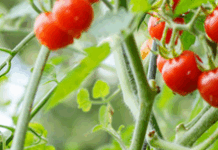Red spots could be sign of disease that shows up this time of year
MANHATTAN, Kan. – Kansas gardeners may be noticing that peonies seem to be suffering from a case of the measles lately.
“Measles is a disease, also known as red spot, that causes distinct, reddish-purple spots on the upper leaf surfaces,” said Kansas State University horticulture expert Ward Upham.
“These spots often coalesce and become large, reddish-purple blotches on the upper leaf surfaces, but are light brown when viewed from the underside of the leaves. The spots on stems will merge and form streaks that are reddish brown.”
Upham said peonies may also be infected by powdery mildew this time of year. “Plants infected with powdery mildew look like they have been dusted with flour,” which can lead to death of the leaves.
Powdery mildew is not as common as measles in Kansas, but does show up at times, Upham said.
For both diseases, Upham noted that sanitation is the best control method.
“Remove all diseased tissue, including stems, at the end of the growing season,” he said. “Actually, all foliage can be removed in mid-August with no harm to the plants, since they will essentially be dormant. Foliate that has already died should be removed now.”
Upham said gardeners should replace mulch that contains plant debris. “Reducing the source of the inoculum will reduce the chances of another severe outbreak next year,” he said.
Divide bearded iris
Upham said bearded iris are well adapted to Kansas and multiply rapidly.
“After several years, the centers of the clumps tend to lose vigor and flowering occurs toward the outside,” he said. “Dividing iris every 3-5 years will help rejuvenate the plant and increase flowering.”
The ideal time to divide iris is late July through early August.
“Because iris clumps are fairly shallow, it is easy to dig up the entire clump,” Upham said. “The root system of the plant consists of thick rhizomes and smaller feeder roots. Use a sharp knife to cut the rhizomes apart so each division consists of a fan of leaves and a section of rhizome.”
Rhizomes that show signs of damage should be discarded, though mild cases of soft rot can be treated by scraping out the affected tissue, allowing it to dry in the sun, and then dipping in a solution composed of 1 part bleach to 9 parts water.
When replanting, Upham suggests cutting the leaves back by two-thirds. Prepare the soil by removing weeds, then add a complete fertilizer – such as 10-10-10 — at the rate of 1 pound per 100 square feet.
Upham and his colleagues in K-State’s Department of Horticulture and Natural Resources produce a weekly Horticulture Newsletter with tips for maintaining home landscapes. The newsletter is available to view online or can be delivered by email each week.
Interested persons can also send their garden- and yard-related questions to Upham at wupham@ksu.edu, or contact your local K-State Research and Extension office.
-30-
FOR PRINT PUBLICATIONS: Links used in this story
K-State Horticulture Newsletter, https://hnr.k-state.edu/extension/info-center/newsletters/index.html
K-State Research and Extension local offices, www.ksre.k-state.edu/about/stateandareamaps.html
K State Research and Extension is a short name for the Kansas State University Agricultural Experiment Station and Cooperative Extension Service, a program designed to generate and distribute useful knowledge for the well being of Kansans. Supported by county, state, federal and private funds, the program has county extension offices, experiment fields, area extension offices and regional research centers statewide. Its headquarters is on the K State campus in Manhattan. For more information, visit www.ksre.ksu.edu. K-State Research and Extension is an equal opportunity provider and employer.
Story by:
Pat Melgares
785-532-1160
melgares@ksu.edu
For more information:
Ward Upham
785-532-6173
wupham@ksu.edu





